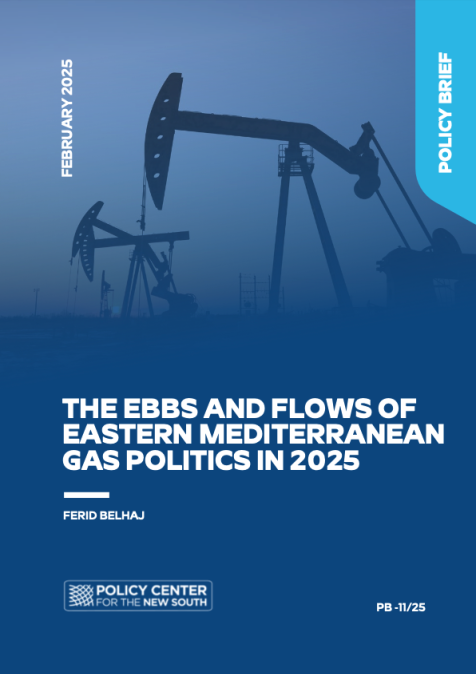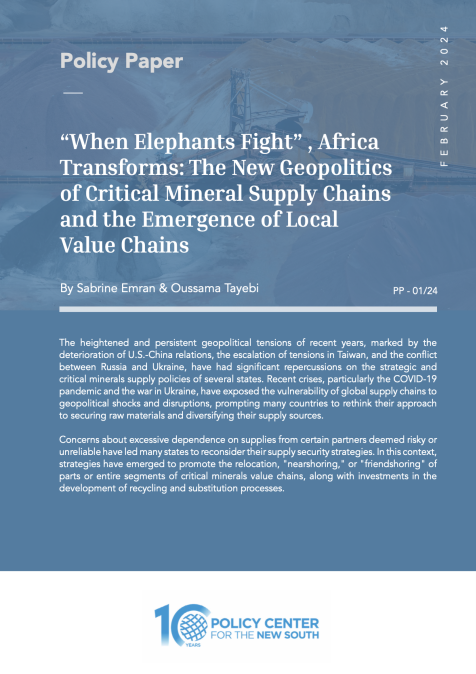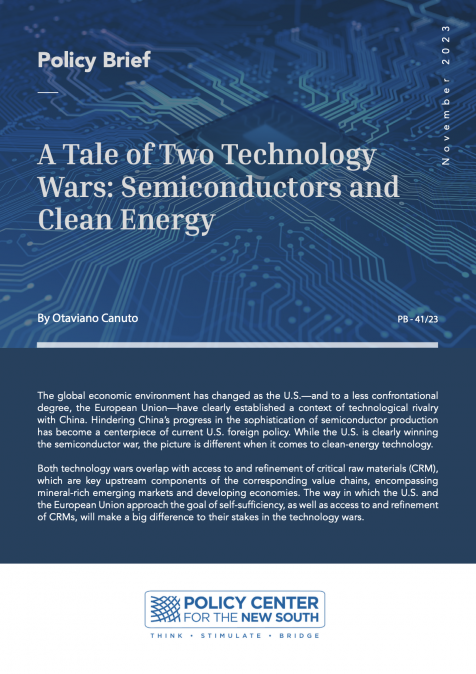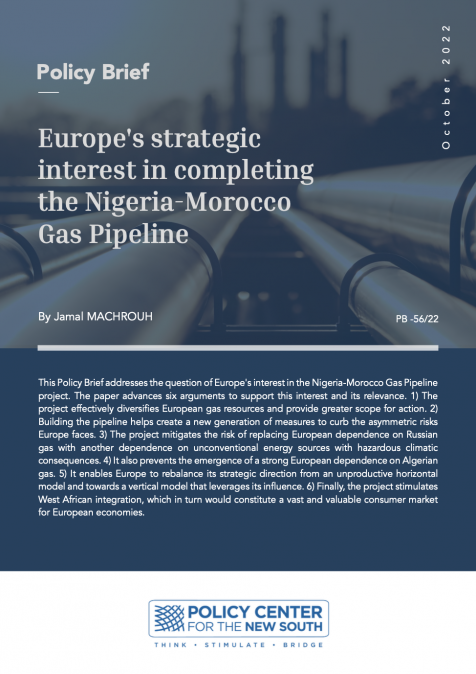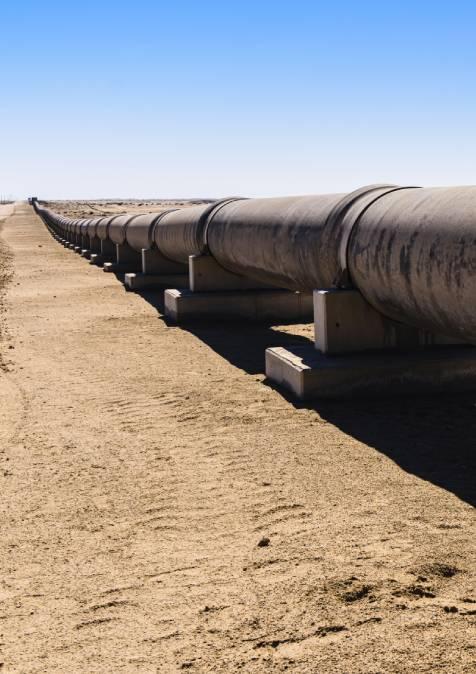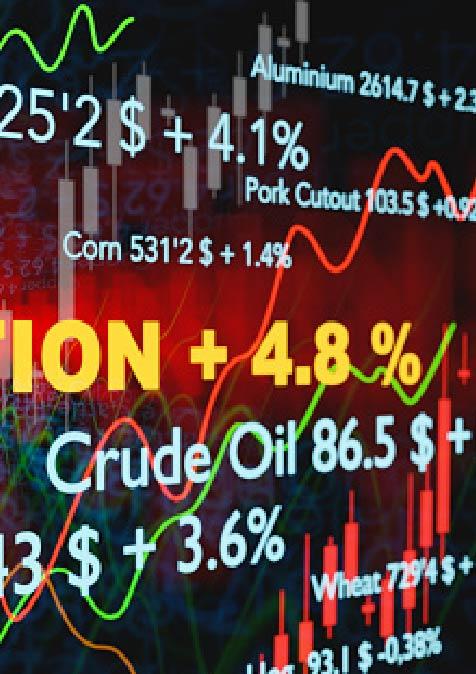Publications /
Policy Brief
Geopolitical tensions and competing interests define the Eastern Mediterranean's energy landscape. Vast natural gas reserves offer economic potential, but overlapping maritime claims and ongoing conflicts—particularly the Israel-Lebanon war and the Gaza conflict—threaten existing agreements and future projects. The European Union’s efforts to reduce dependence on Russian gas initially positioned the region as a key supplier, but escalating instability now puts these ambitions at risk. Key factors include the impact of conflicts on gas exploration and exports, the roles of Turkey, Egypt, and Qatar, the influence of global powers and multinational corporations, and the uncertain prospects for regional energy cooperation.
Introduction: A Region at the Crossroads of Energy and Conflict
The Eastern Mediterranean remains a focal point for global energy politics, with the vast natural gas reserves in the region’s exclusive economic zones (EEZs) bringing both economic potential and geopolitical risks. The region—spanning Israel, Lebanon, Egypt, Cyprus, Turkey, and Palestine—continues to be shaped by overlapping maritime claims, ongoing conflicts, and shifting energy alliances. As of early 2025, two major conflicts have added a new layer of complexity to the region’s energy landscape: the Israel-Lebanon war, which has escalated into an extended confrontation between Israel and Hezbollah, and Israel’s war on Gaza, which has strained regional alliances and security calculations. These conflicts threaten existing energy agreements and also cast uncertainty over future exploration and export plans. The European Union’s efforts to decouple from Russian gas in response to the war in Ukraine initially positioned the Eastern Mediterranean as a key alternative supplier. However, the worsening security situation has created instability that could derail these ambitions.
This paper explores the evolving energy politics of the Eastern Mediterranean by analyzing:
1- The impact of the Israel-Lebanon war and the Gaza conflict on gas exploration and exports.
2- The role of regional players, including Turkey, Egypt, and Qatar, in shaping gas politics.
3- The involvement of multinational corporations (MNCs) and global powers, including the United States, Russia, and China.
4- The uncertain future of regional energy cooperation amid ongoing instability.
Geopolitical and Legal Backdrop: EEZ Disputes and Unresolved Tensions
The legal framework governing the Eastern Mediterranean’s EEZs is shaped by the United Nations Convention on the Law of the Sea (UNCLOS), yet multiple nations have overlapping claims that frequently lead to diplomatic and military tensions. These disputes are not only legal in nature but are also tied to historical grievances and strategic rivalries. The region’s energy politics are deeply intertwined with its geopolitical realities, making it a volatile and unpredictable arena for energy exploration and development.
Israel-Lebanon: A War with Profound Energy Implications
The U.S.-brokered 2022 Israel-Lebanon maritime agreement, which allowed Lebanon to begin gas exploration in the Qana field, while Israel maintained control over Karish, is now under severe strain. The Israel-Hezbollah war, which erupted in late 2024 as part of the broader escalation in Gaza, has transformed this previously fragile agreement into a major flashpoint. Israel’s energy minister called in December 2024 for a renegotiation of the maritime deal, arguing that Hezbollah’s attacks on northern Israel justify a reassessment of Lebanon’s rights to offshore gas exploration.
For Lebanon, the conflict poses an existential economic threat. The TotalEnergies-led consortium, which includes QatarEnergy and Eni, began exploratory drilling in Lebanese waters in 2023, but findings have been limited. The ongoing hostilities have discouraged further investment, with TotalEnergies announcing in January 2025 that it is reconsidering its operations in Lebanon because of the deteriorating security situation. The war has also disrupted Lebanon’s already fragile economy, with the country facing severe energy shortages and a collapsing currency. The potential for gas exploration offered a glimmer of hope for economic recovery, but the conflict has dashed those hopes, at least in the short term.
Turkey vs. Greece and Cyprus: The Longstanding Maritime Rivalry
Turkey continues to assert claims over parts of the Eastern Mediterranean, frequently challenging Greece and Cyprus over EEZ rights. Turkish naval patrols have increased around the contested waters, and Ankara has expanded energy cooperation with Libya under a maritime agreement signed in late 2024. Meanwhile, Greece and Cyprus have deepened their ties with Israel and Egypt, reinforcing their commitment to the Eastern Mediterranean Gas Forum (EMGF) as a counterweight to Turkish ambitions.
Turkey’s assertive stance has led to increased tensions with both Greece and Cyprus, and with other regional actors. The Turkish government has been vocal about its claims to the region’s energy resources, and its actions have often been seen as provocative by its neighbors. The situation is further complicated by Turkey’s close ties with Russia, which has its own interests in the region. The ongoing tensions between Turkey and its neighbors have created a volatile environment that threatens to undermine regional energy cooperation.
Egypt: A Key Player Caught in Economic Turmoil
Egypt remains a central hub for liquefied natural gas (LNG) exports from the region, with its Damietta and Idku LNG plants processing gas from both Egyptian and Israeli fields. However, Egypt’s deepening economic crisis—marked by currency devaluation, rising debt, and social unrest—has raised concerns about the sustainability of its gas sector.
While Egypt initially benefited from Israeli gas imports, the conflict with Hezbollah and instability around Israeli infrastructure has disrupted flows, leading to reduced gas re-exports. Egypt’s own declining gas production has also forced it to cut exports of its own LNG, raising further economic risks. The country’s economic woes have also made it difficult for the government to attract the necessary investment to develop new gas fields and infrastructure. Despite these challenges, Egypt remains a key player in the region’s energy politics, and its ability to navigate its economic crisis will have significant implications for the future of Eastern Mediterranean gas.
Gas Discoveries as a Geoeconomic Game Changer—But For Whom?
The Tamar and Leviathan fields (Israel), the Zohr field (Egypt), and the Aphrodite and Glaucus fields (Cyprus) remain the most significant gas discoveries in the region. While these fields were initially expected to transform the Eastern Mediterranean into a key supplier for Europe, ongoing geopolitical instability has dampened those prospects.
Key Developments as of January 2025:
- Israel’s offshore infrastructure has become a security target. Hezbollah has launched drone and missile strikes at Israeli energy installations, forcing operators to suspend production at the Karish field intermittently.
- Cyprus’s energy ambitions remain constrained by the lack of export infrastructure, despite new discoveries in 2024. The island still lacks an LNG facility, meaning it remains dependent on pipeline deals with neighboring countries.
- Egypt has reduced LNG exports because of falling production and rising domestic demand, despite initially positioning itself as a major European supplier.
Will the Region Fulfill Its Potential?
Despite the region’s large gas reserves, political instability and security risks continue to deter long-term investment. While European demand remains strong because of the continued efforts to replace Russian gas, the question remains of whether companies will risk billions to invest in a highly volatile region. The ongoing conflicts in the region have created an environment of uncertainty that makes it difficult for companies to commit to long-term projects, while the lack of infrastructure in some areas, such as Cyprus, further complicates the situation.
The Role of External Actors: Qatar, Russia, and the U.S.
Qatar: A Power Broker in Gas and Geopolitics
Qatar has strengthened its role as a financial and strategic player in the Eastern Mediterranean. Stae-owned QatarEnergy holds stakes in Lebanese offshore exploration and has sought deeper ties with Egypt and Turkey. At the same time, Qatar continues to maintain ties with Hamas, positioning itself as a key mediator in the Gaza war while leveraging its energy investments to expand regional influence. Qatar’s involvement in the region’s energy politics is multifaceted, and its ability to navigate the complex geopolitical landscape has made it a key player in the region.
Russia: Balancing Energy and Military Influence
Russia’s position in the Eastern Mediterranean remains complex. Gazprom has shown interest in the region’s gas markets, while Moscow’s military cooperation with Assad’s Syria is now a thing of the past, and the uncertain dynamics in Libya pose a strategic challenge to maintaining leverage. Russia views Turkey as a key partner in energy transit, particularly through the TurkStream pipeline. Russia’s involvement in the region is driven by both energy and geopolitical considerations, and its actions have often been seen as destabilizing by other regional actors.
The U.S.: Supporting Israeli Energy Security
Washington has provided political and military backing for Israeli gas projects while also promoting Eastern Mediterranean gas as a diversification strategy for Europe. However, the Biden administration’s calls for de-escalation in the Israel-Lebanon war clashed with Israeli demands to renegotiate maritime agreements. American multinationals such as Chevron remain committed to Israel’s offshore energy sector, though heightened security risks may force a strategic reassessment. The U.S. has also been involved in efforts to mediate the conflict in Gaza. While the new Trump administration has adopted an affirmative stance marked by greater proactivity and vocal engagement, its ability to shape the situation in favor of unfettered U.S. interests remains uncertain given the region’s complex dynamics.
The Future of Eastern Mediterranean Gas: An Uncertain Roadmap
With ongoing conflicts in Israel-Lebanon and Gaza, maritime disputes, and shifting alliances, the future of Eastern Mediterranean gas remains uncertain. The following factors will determine whether the region can capitalize fully on its energy potential:
- Security Risks: In the unlikely but still possible scenario that Hezbollah’s attacks on Israel’s energy infrastructure resume, foreign investors may withdraw, affecting regional gas production.
- European Demand: While Europe still seeks alternatives to Russian gas, rising instability may force the EU to seek more reliable suppliers elsewhere.
- Egypt’s Economic Stability: Egypt’s ability to maintain its LNG export-hub status will depend on resolving its economic crisis.
- Turkish Ambitions: Turkey’s growing assertiveness in maritime disputes could disrupt regional energy cooperation.
The Missed Opportunities for Economic Growth and Cooperation
The Security Dilemma: When Energy Becomes a Target
The subdued but lingering threat of an Israel-Hezbollah conflict underscores a critical risk: offshore energy infrastructure remains highly vulnerable to asymmetric warfare. While tensions have eased, Hezbollah’s capacity to target Israeli energy assets with precision-guided missiles has diminished but still poses a security challenge for multinational operators in the region. This persistent risk not only heightens security concerns but also increases operational costs and discourages long-term investment, particularly in a market where companies must already contend with complex legal and regulatory challenges.
Additionally, the lack of conflict-resolution mechanisms and regional trust-building measures exacerbate the problem. Unlike the North Sea, where European countries have established clear regulatory frameworks and dispute-resolution mechanisms for offshore-energy resources, the Eastern Mediterranean remains a zone of competing national interests, contested sovereignty, and militarized maritime claims.
Unless a sustainable regional security framework is established—one that guarantees the protection of energy infrastructure from geopolitical shocks—major international energy companies will remain wary of committing the necessary investment for long-term development.
The Shifting Global Energy Landscape: The Role of Natural Gas in the Transition
Beyond regional security concerns, the Eastern Mediterranean’s energy future is also being shaped by broader trends in the global energy transition. While natural gas has been positioned as a ‘bridge fuel’ in the shift away from coal and oil, its long-term role in global energy markets is increasingly uncertain.
- Europe’s evolving energy strategy: The European Union had initially looked to the Eastern Mediterranean gas as an alternative to Russian supplies, but the EU’s accelerated transition towards renewables and green hydrogen could dampen long-term demand.
- Investment risks for gas projects: Given the volatility in energy markets and the global push for decarbonization, companies may be reluctant to pour billions into projects that could become stranded assets within decades.
- The role of Gulf players: With Qatar and the UAE increasing their LNG production, Eastern Mediterranean gas producers will face stiff competition from more established players with financial and logistical advantages.
Future Scenarios: What Comes Next?
Given the current trajectory of geopolitical tensions, there are three plausible scenarios for the future of Eastern Mediterranean gas:
The Status Quo: Instability Continues to Undermine Energy Development
In this scenario, conflict remains the defining feature of the region, with energy resources continuing to be a source of disputes rather than cooperation. The Israel-Lebanon war remains unresolved, Turkish-Greek tensions persist, and Egypt struggles to maintain economic stability. As a result, foreign investment in regional gas projects slows down, LNG export plans falter, and the region fails to capitalize on its full energy potential.
A Geopolitical Reset: Diplomatic Engagement Leads to a New Energy Accord
A second scenario could involve a geopolitical realignment, in which regional actors recognize the economic imperatives of cooperation and reach new energy agreements. A potential Israel-Lebanon ceasefire could restore stability to offshore exploration, while Egypt, Cyprus, and Greece deepen energy cooperation to create a stable gas corridor to Europe. The Eastern Mediterranean Gas Forum could be revived as a credible multilateral platform, ensuring energy security and dispute resolution.
Strategic Diversion: The Region’s Energy Future Moves Beyond Gas
A third possibility is that Eastern Mediterranean countries pivot towards renewable energy partnerships, recognizing that the window of opportunity for large-scale natural gas development is narrowing. If the EU accelerates its decarbonization drive and Gulf nations such as Qatar consolidate their dominance of LNG markets, Eastern Mediterranean countries may redirect investments towards solar, wind, and hydrogen projects instead of doubling down on gas.
Conclusion: A Region at a Crossroads
The Eastern Mediterranean is at a critical crossroads where energy, security, and geopolitics intersect. The region’s vast gas reserves present a once-in-a-generation opportunity for economic transformation, but persistent conflicts, unresolved maritime disputes, and shifting global energy dynamics threaten to squander this potential.
To move forward, regional leaders must recognize that energy security and economic prosperity are linked fundamentally to political stability and cooperation. Without serious diplomatic efforts to resolve disputes and secure investments, the Eastern Mediterranean’s gas wealth will remain a mirage—visible, but ultimately unattainable.
The stakes are high, but so are the opportunities. The question is: will the Eastern Mediterranean seize this moment to build a cooperative energy future, or will it continue to be trapped in the cycles of conflict that have defined its past?
References
1. Journal of Energy & Natural Resources Law: "The Legal and Geopolitical Challenges of Eastern Mediterranean Gas Exploration" (2024).
2. Energy Policy: The Eastern Mediterranean Gas Forum: A New Model for Regional Energy Cooperation?" (2023).
3. Geopolitics: Turkey’s Energy Strategy in the Eastern Mediterranean: Balancing Geopolitics and Economics" (2024).
4. Middle East Journal: Hezbollah’s Role in Shaping Lebanon’s Energy Future" (2025).
5. International Affairs: The Great Power Game in the Eastern Mediterranean: Energy, Security, and Diplomacy" (2024).
6. Marine Policy; Maritime Boundary Disputes in the Eastern Mediterranean: Implications for Energy Exploration" (2023).
7. International Crisis Group: The Israel-Lebanon Maritime Dispute: A Flashpoint for Conflict" (2025).
8. Oxford Institute for Energy Studies: Egypt’s LNG Export Dilemma: Balancing Domestic Needs and International Markets" (2024).

